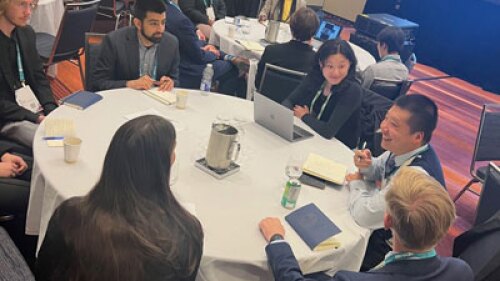How can the built environment facilitate connections between people? Improve the connections between cities and between public and private space? These are the questions posed by a report titled Connected Cities, published by global architecture firm Benoyand AsiaProperty. The report was launched during a recent event hosted by ULI Hong Kong.
Simon Bee, Benoy’s managing director of global design, presented his thoughts on connected cities and what can be learned from great examples of placemaking and urban design as people look to the next generation of building and designing cities.
Bee drew comparisons between London and Hong Kong and highlighted the need for connections between city plots and the importance of walkability. In London, a journey from King’s Cross Station to Holborn can be taken from myriad walkable routes, a quality that has shaped the city as a pedestrian-friendly capital. In Asia, stakeholders are looking at ways that connections can be made between sites so that projects are not developed in “silos” as individual plots.
Successful examples of this thinking already exist across China: Xintiandi in Shanghai, Taikoo Li in Chengdu, Parc Central by Benoy in Guangzhou, and Taikoo Li Sanlitun in Beijing. With strong pedestrian-friendly strategies and connectivity not only within their sites but also to surrounding areas, they serve as benchmarks for the region.
Dense cities, in theory, provide a great platform for walkability. However, even in dense cities such as Hong Kong, heavy infrastructure, disjointed walkways, and a disconnected waterfront can disrupt the pedestrian experience and integration between city plots. These cities need to look to best practice examples such as the High Line in New York City to rejuvenate existing infrastructure into pieces of an energized and landscaped public realm. Imagine the famous Mid-Levels Escalator in Hong Kong reimagined in a similar way.
As increasing density also puts pressures on the ground plane of cities, how the issue of connectivity is taken to the sky is another priority for designers, developments, and governments. Bee cited Singapore’s approach to linking towers above the ground plane and humanizing tall buildings with green facades, green roofs and sky gardens, and public realm.
However, room still exists to improve in the case for connected tall buildings. Ensuring that these developments have the right mix of activities and successful urban design will be crucial to their ongoing success. This is a theme that Benoy explored in its Sky Spaces design competition and exhibition in 2016, which involved the solicitation of new models for landscaped, vertical, and mixed-use buildings in Hong Kong.
Bee looked at urban catalysts that are driving change in cities nowadays such as Seoul’s Cheonggyecheon, a seven-mile (11 km) public recreation space. Once an enclosed waterway covered by freeways and heavy transport infrastructure, it is now a flowing, healthy river with walkways on either side and a social gathering place popular among residents and tourists.
In Hong Kong, the pedestrianization of Des Voeux Road Central could be a similar catalyst for greater connectivity in the city. Benoy supported a grass-roots campaign to support this effort, called “Walk DVRC.” Plans to improve the road’s pedestrian experience remain at the proposal stage.
Following the presentation from Bee, the discussion was opened up to the panel moderated by Mark Cooper, editor at AsiaProperty. Joining the panel was Paul Zimmerman, founder and CEO of Designing Hong Kong, and Donald Choi, managing director at Nan Fung Development.
Download a copy of Connected Cities here.
Read more from Simon Bee on The Power of Public Realm here.




